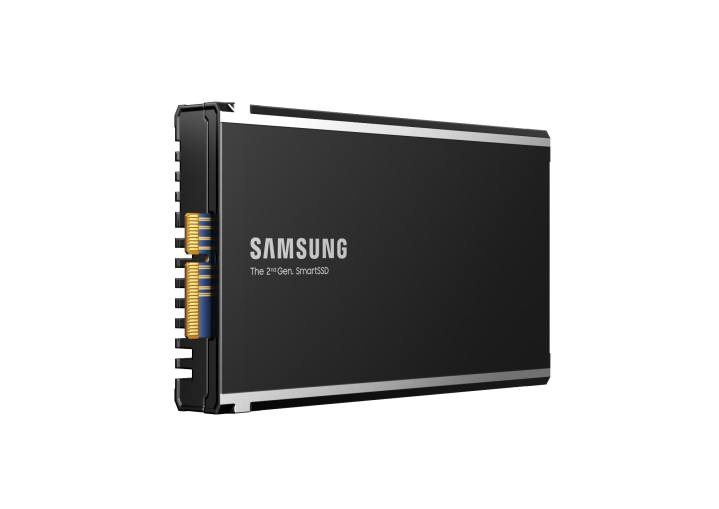Forget CPUs. Say goodbye to ARM systems on a chip (SOCs). Samsung just dropped its second-generation smart SSD, and this sounds like a game changer.
The SmartSSD processes data right there on the hard drive. Programs saved to your PC don’t need to lose speed transferring to your CPU in order to launch. Games can render graphics directly from the drive, freeing up GPU cores. It’s like a party on your SSD and everyone is invited.

“The SmartSSD is playing an increasingly important role,” Samsung said in an official press release. “Especially with the growth of next-generation technologies such as AI, machine learning and 5G/6G, which require large amounts of data processing.”
But this isn’t a regular consumer-facing product. Samsung developed SmartSSD for high-performance use in industry and research. SmartSSD is a proprietary technology developed by Samsung and AMD in 2020. The hard drive is designed to relieve the CPU and GPU during heavy scan processes, such as when using AI or developing high-end graphics.
Normally, the CPU would need to scan the hard drive for the information it needed and then pull that info out of the drive before processing it or sending it to the GPU. But the SmartSSD allows the hard drive to handle most of that process.
“Unlike existing SSDs, Samsung’s SmartSSD can process data directly, thereby minimizing data transfers between the CPU, GPU and RAM.” Samsung said. “This technology can avoid the bottlenecks that often occur when moving data between storage devices and CPUs, resulting in markedly improved system performance and much higher energy efficiency.”
According to tech watchdog site TechPowerUp, Samsung’s second-generation SmartSSD cuts processing time by 50% and reduces power consumption by up to 70%. It also frees up to 97% of CPU utilization.
Samsung once again partnered with AMD to create the second-generation SmartSSD. The drive uses an AMD-based SOC heavily optimized for Samsung SSD architecture. Samsung hopes to work with other manufacturers to standardize SmartSSD technology through the Storage Network Industry Association (SNIA) so future smart SSD drives will work in a variety of devices.



